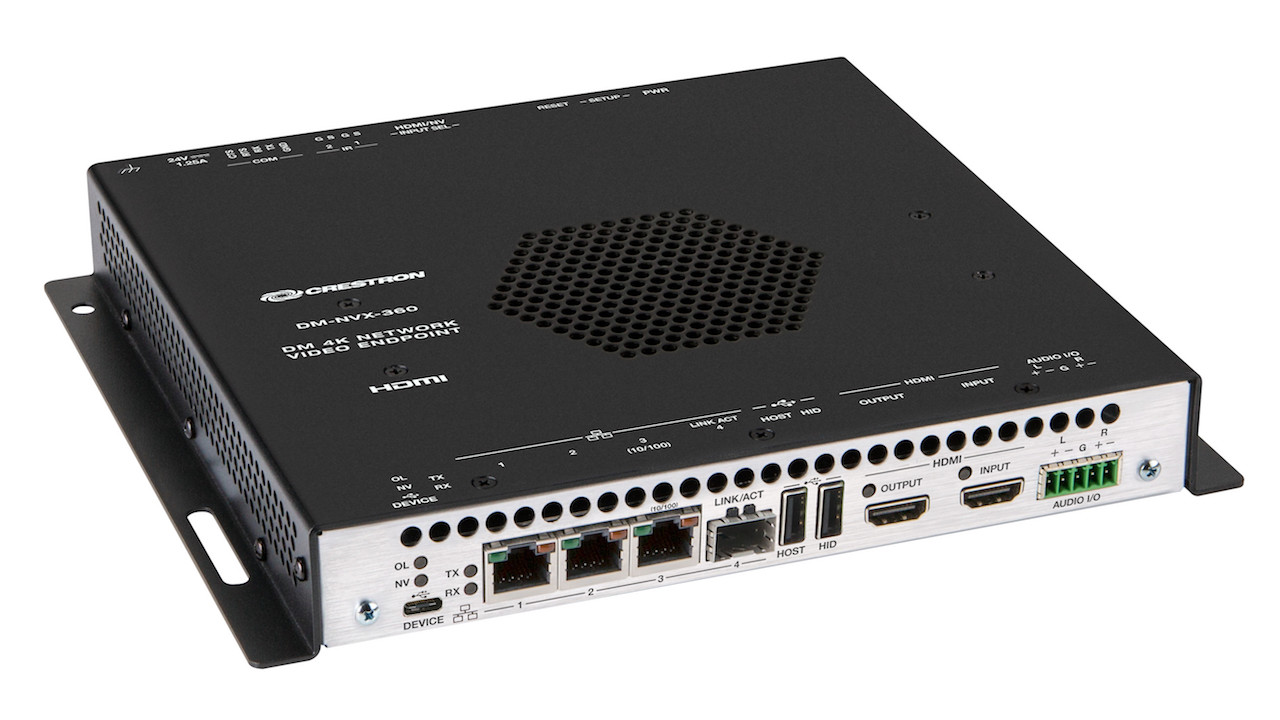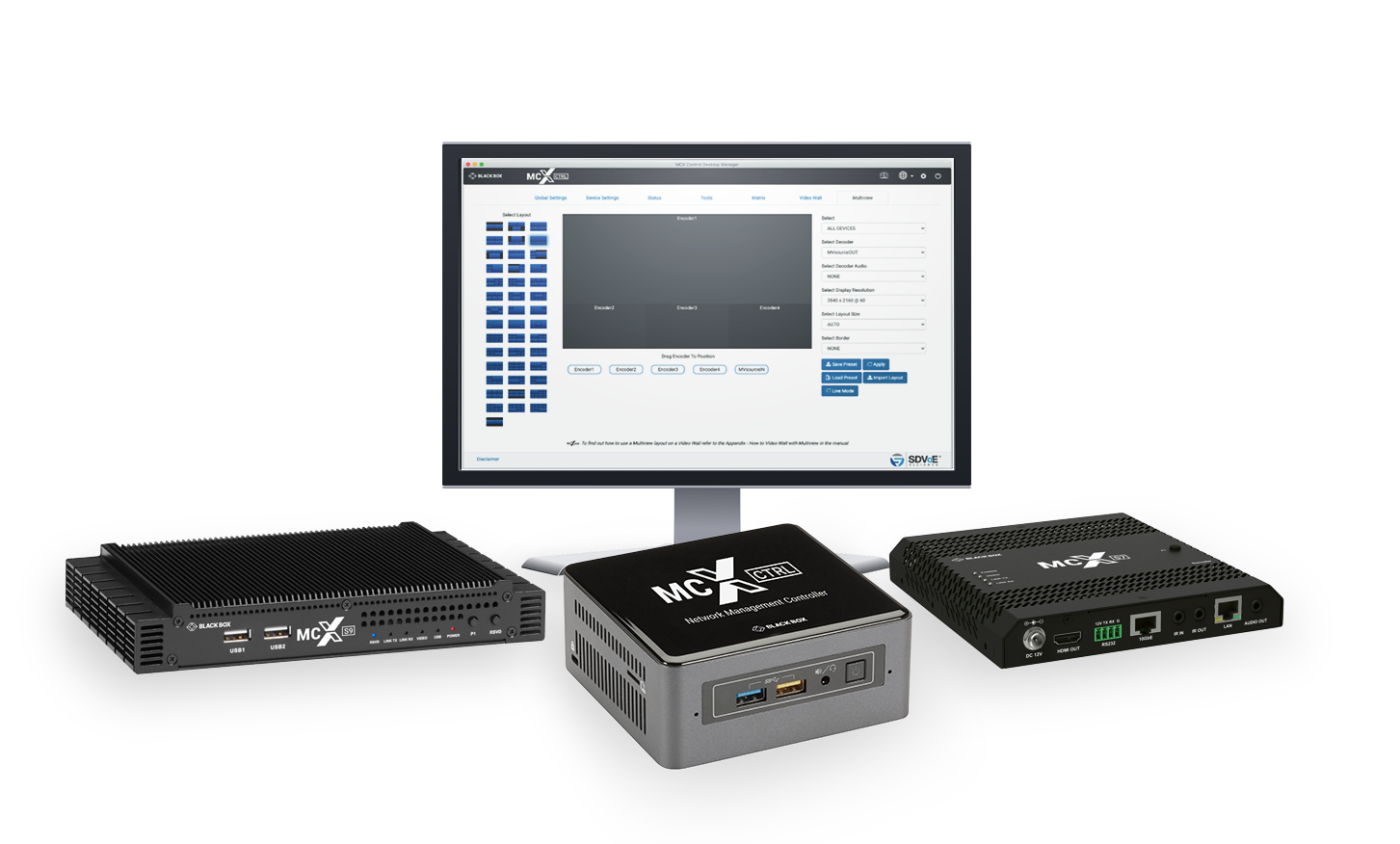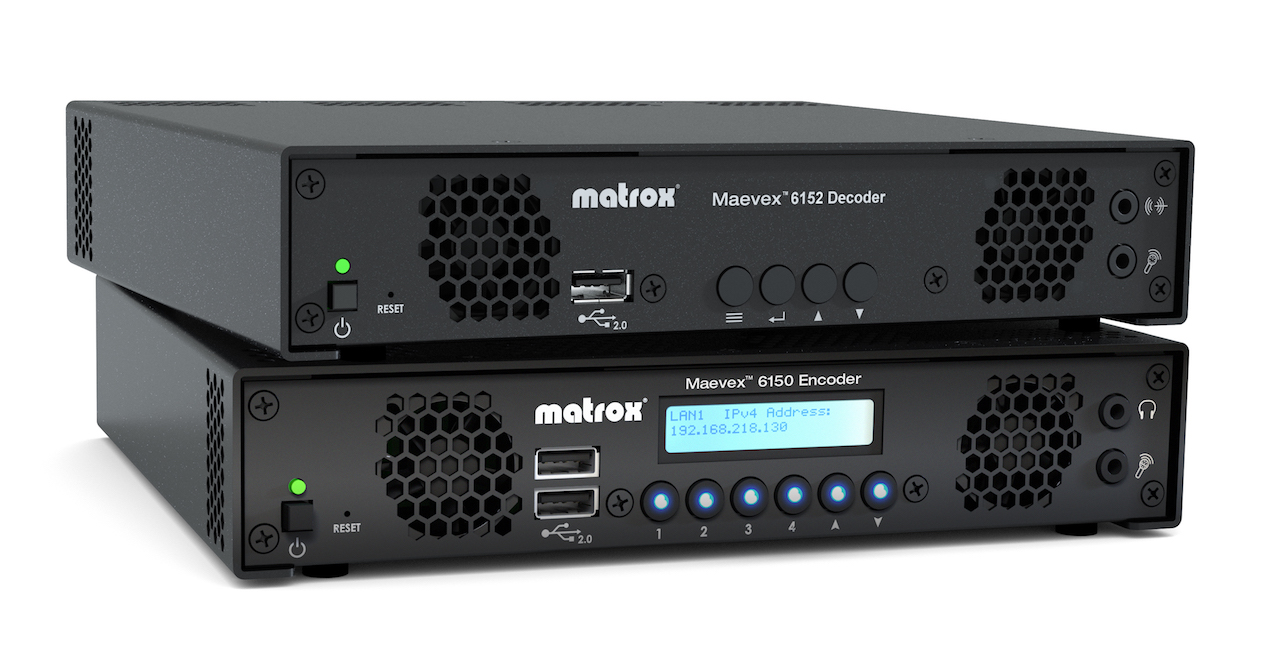Video over IP has been adopted more widely over the past year. As products and applications become more flexible, interoperable, and standards-based, users find they can apply them to many different verticals and solutions.
Andrew Ludke, Crestron’s product management director for AV solutions, and Alex Peras, Crestron’s digital media product manager, shed some light on the ongoing transition. “During the global pandemic, companies have had to adapt and respond to the changing and evolving needs of their organization, supporting remote participants with the intention of treating them like first-class citizens. The flexibility of AV over IP has made it easier for those who have invested in the technology to react. In addition, AV over IP has gained broad acceptance in medium- and large-scale deployments, with continued adoption in high-security environments such as in government and corporate settings.”
[The Integration Guide to AVoIP]

From an integration perspective, real-time VoIP has some technical advantages. “The real benefits in real-time video over IP have come in the way of latency and resolution. Technologies such as software-defined video over Ethernet (SDVoE) do not provide ‘near uncompressed’ and ‘lightly compressed’ video and audio over IP, but instead deliver pixel-perfect images with latencies of less than 20 microseconds,” explained Black Box director of product management, AV and infrastructure Jonathan McCune.
Evolving Trend
Considering the distances that can be covered by an organization’s IP networks, the technology today allows teams to interact with pandemic-appropriate group sizes or socially distanced teams internally. “This can then be integrated with wider systems such as meeting, conference and signage systems,” suggested McCune.
Real-time encoding of video for live streaming and recording is now a very mature market broken up into hundreds of hardware- and software-based solutions to support many different workflows, explained Matrox’s Samuel A. Recine, vice president of sales for the Americas and Asia-Pacific.
Scroll through the gallery below to see the latest Video over IP products for pro AV.
“In the AV infrastructure market, most significantly in this past year we have seen the continued emergence of tightly coupled encoder/decoder pairings designed to offer the best possible quality, performance, and low latency for very high node-count installations, but—more importantly during COVID—for multisite and remote AV infrastructure implementations,” he added.
For integrators, Recine stated that there are several factors to consider when it comes to real-time video over IP. These include examining the use case scenario to determine cost, security, and performance criteria.
Essential Considerations
Recine suggested some questions to ask integrators: “How useful is the real-time video? Will the real-time video over IP be interoperable with the hardware and software products that interest me? Does it meet the organization’s security and vulnerability requirements for both signal management and payload encryption? What are the capabilities and tools provided by the solution to support local applications and remote applications? What can the product do out of the box? What tools exist to allow it to connect to other things?”

In terms of performance, Recine advises integrators to factor in the bit rate for real-time 4K and real-time HD video and audio, as this can affect the number of nodes, the ability to do remote work, and network complexity. Quality is also a priority, he stated, “as motion video and static high-frequency content like PC text must both perform well.” Managing latency is also important.
Understanding what protocols are supported is another important factor when it comes to real-time video over IP. “Some protocols are much better at sustaining performance over noisy networks than others,” he continued.
Recine said integrators should also ask these questions: “How many channels are supported? Are audio and video carried together or separately, or both? How many inputs are supported at capture? How many concurrent streams are supported? Can the streams be different protocols? Is secure encryption an option? What’s the performance with it on or off? Is only audio and video required, or is bi-directional control over USB required?”
The Integrator’s Checklist for Real-Time VoIP
Black Box’s McCune gives a quick rundown of what integrators should consider when working with real-time video over IP.
1. Network Infrastructure
There are many discussions around using either 1 Gbps or 10 Gbps networks and their (dis)advantages. In reality, 10 Gbps access is possible today in many deployments and network architectures at a cost much lower than anticipated. Modernization of networks will allow planners/users to access much broader capabilities and features within an AV/IT network.
2. Network Documentation
Documentation of network infrastructure is very important when it comes to access and system expansion. For integrators, proper documentation will provide a more complete picture to work from.
3. Resolution Requirements versus Preconceived Notions
We hear it all the time: “We need 4K!” In fact, we’re now starting to hear 8K grumblings. Carefully consider if users really need it … or if they just want it. Is it even possible in the network environment (e.g. based on the number of endpoints or types of sources and displays)?
4. Security
This is the top concern of many planners. Questions should include: How are the networked pairings encrypted? What is the security protocol in a network controller? And many more.
5. Ad-Hoc Connectivity
Bring Your Own Device (BYOD) has been a popular discussion for a long time. However, the primary device/source addition today is real-time video over IP. The ability to interconnect and share multiple video and source streams on demand is critical.
What’s Next for Real-Time Video over IP?
While the flexibility and scale offered by video over IP is clear, Crestron’s Peras and Ludke foresee greater demands and specifications being required in a post-pandemic future. “AV over IP is about flexibility, scalability, and enabling unique applications. Post-COVID, there will be a need for integrating not just video, but also UC into more and more spaces. This includes spaces in which UC was not as frequently deployed, such as multipurpose rooms, flex and divisible spaces, executive briefing centers, and training and education spaces.”
According to Peras and Ludke, the ability of AV over IP to transport audio, video, and USB data and control enables more flexible UC integration, empowering and connecting these more complex spaces. “With AV over IP, it’s possible to create more immersive and equitable experiences, bringing those environments together in a very cohesive way. AV over IP has also really pushed the boundaries by providing secure and high-quality video distribution that’s scalable and flexible in one simple solution.”
Furthermore, the ongoing pandemic is likely to cement some more permanent changes in the way we consume and deliver video. “While we will eventually go back to sporting events, bars, schools, and work, we’re going to see a more permanent change in the way we interface with both people and objects. Integration of IoT into AV and AV-over-IP systems are going to create a more disconnected connected world. I think we will see more voice and imaging enabling systems, and far more automation,” stated McCune.
This prediction of a wider move toward greater integration for real-time video over IP seems universal among all three manufacturers. “More integration for remote workflows will mean several things,” added Recine. “Increased focus on interoperable open standards. High emphasis on security without compromising performance. More, and better, out-of-the-box capabilities for remote workflows, and improved integration tools to work with other hardware and software products.”


